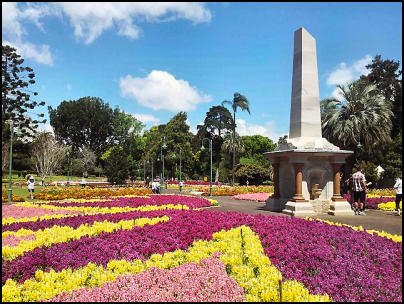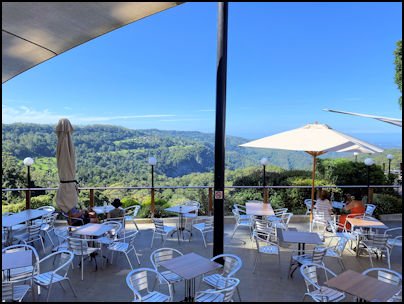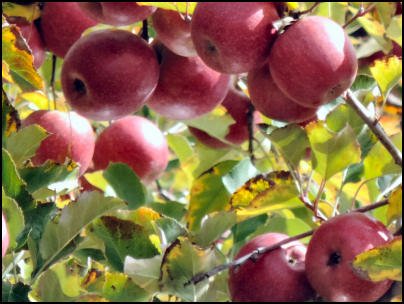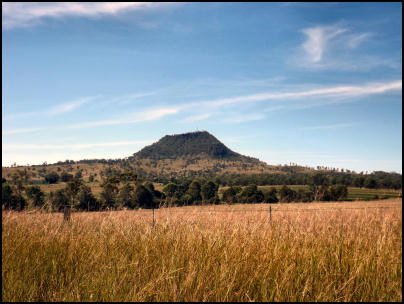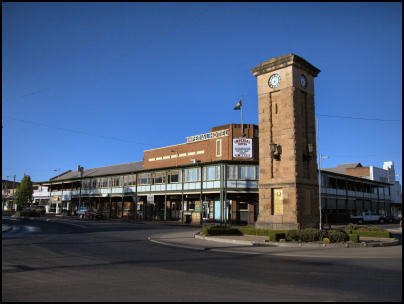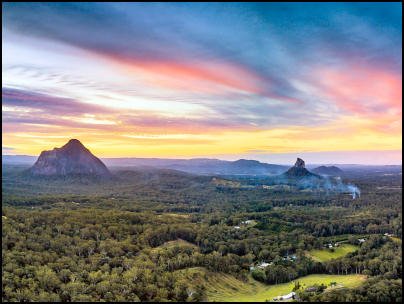 Queensland is Australia’s smallest wine-producing state, accounting for under 1% of the national crush, according to Wine Australia National Vintage Report 2023. The state has just two official GI (Geographic Indication) wine regions, Granite Belt and South Burnett, and a handful of other Non-GI regions. The state saw significant growth in the early noughties, growing from just 39 wineries in 2001 to 143 in 2004.
Queensland is Australia’s smallest wine-producing state, accounting for under 1% of the national crush, according to Wine Australia National Vintage Report 2023. The state has just two official GI (Geographic Indication) wine regions, Granite Belt and South Burnett, and a handful of other Non-GI regions. The state saw significant growth in the early noughties, growing from just 39 wineries in 2001 to 143 in 2004.
Queensland experiences extreme heat and high rainfall each year, making fungi a severe problem. Due to the heat, most of the vineyards lie to the southeast, where temperatures aren’t as severe.
Granite Belt is the larger of the two regions and is located in the south of the state, on the Queensland/New South Wales border, and centres around the town of Stanthorpe. The region is one of the highest wine regions in Australia, with vineyards at more than 1000m above sea level. Granite Belt is a landscape of beauty and diversity with four distinct seasons – log fires and occasional snow in winter and cooler summer nights where you can escape the coast’s heat.
South Burnett is 3-hour drive northwest of Brisbane, around the town of Kingaroy, and the journey takes you through picturesque countryside and quaint rural towns. While the modern winemaking history of the region dates back to only 1993, wines were planted in the early 1900s. The area is geographically defined by Blackbutt, Brisbane and Coast Ranges to the east, the Great Divide to the southwest and west, and declines to the Central Burnett and Burnett River to the north.
Travelling south, you reach the unofficial wine region of Darling Downs (Non GI), centred around Toowoomba. The area has been famed for grazing and farming for over 150 years. Wine production was a significant activity at the turn of the nineteenth century but rapidly declined in the wake of Federation. Today, there are only a handful of wineries operating in the region.
Moving to the coast, you will find the Sunshine Coast Hinterland (Non GI), centred around the coastal town of Maroochydore and extending north past Noosa Heads and south beyond Caloundra. The region has soils suitable for winemaking, but the area relies heavily on tourism to attract people to visit the cellar doors.
South from here is Scenic Rim (Non GI), encapsulating the broader Brisbane area. The main wineries are predominantly to the south of the capital. The region is home to the state’s largest winery, Sirromet Wines, in Mount Cotton. The winery hosts the cellar door in Scenic Rim, yet the vines are grown on 100 hectares in the high altitude of the Granite Belt.
Lastly, we have Gold Coast Hinterland (Non GI), not surprisingly taking in the Gold Coast, in the states south, all the way to the New South Wales border. The region is beautiful, encompassing the rainforest of Mount Tamborine and the evergreen countryside of Albert River and Canungra.
Each of these regions offers something different. The Great Dividing Range offers mesoclimates and higher altitudes for cooler temperatures. Though Queensland is limited in what grape varieties it can produce, they do an excellent job in the viable ones.
Many of the wineries in Queensland offer accommodation and dining options, making them ideal for a weekend getaway.
Wineries across the state
Click here to find out more about the wineries in this region and to search for specific criteria.
Top Stats
Number of Regions
2 official GI
Number of Wineries
~70
Total grape crush
489 tonnes
Area of planted vine
630 hectares
Regions
The Darling Downs wine region is centred around the town of Toowoomba, 125km west of Brisbane, the state’s capital.
Encompassing the rainforest beauty of Mt Tamborine and the emerald countryside of Albert River and Canungra, this is Queensland’s boutique wine region.
Located 1000 metres above sea level, Queensland’s capital of cool is only three hours drive from Brisbane, experiencing unique growing and ripening conditions.
The Scenic Rim wine growing area lies in the eroded interior of an ancient shield volcano, around the outskirts of Brisbane, taking in the Mount Cotton and Brisbane Valley areas.
Located northwest of Brisbane, the South Burnett is bordered by the Great Dividing Range and the flourishing red paddocks of Kingaroy.
The Sunshine Coast wine region is one of the most diverse and fastest growing wine regions in Queensland, attracting large volumes of tourists from the Sunshine Coast and Brisbane.
Photo Credits: Darling Downs, Granite Belt, Scenic Rim, South Burnett, Sunshine Coast Hinterland


